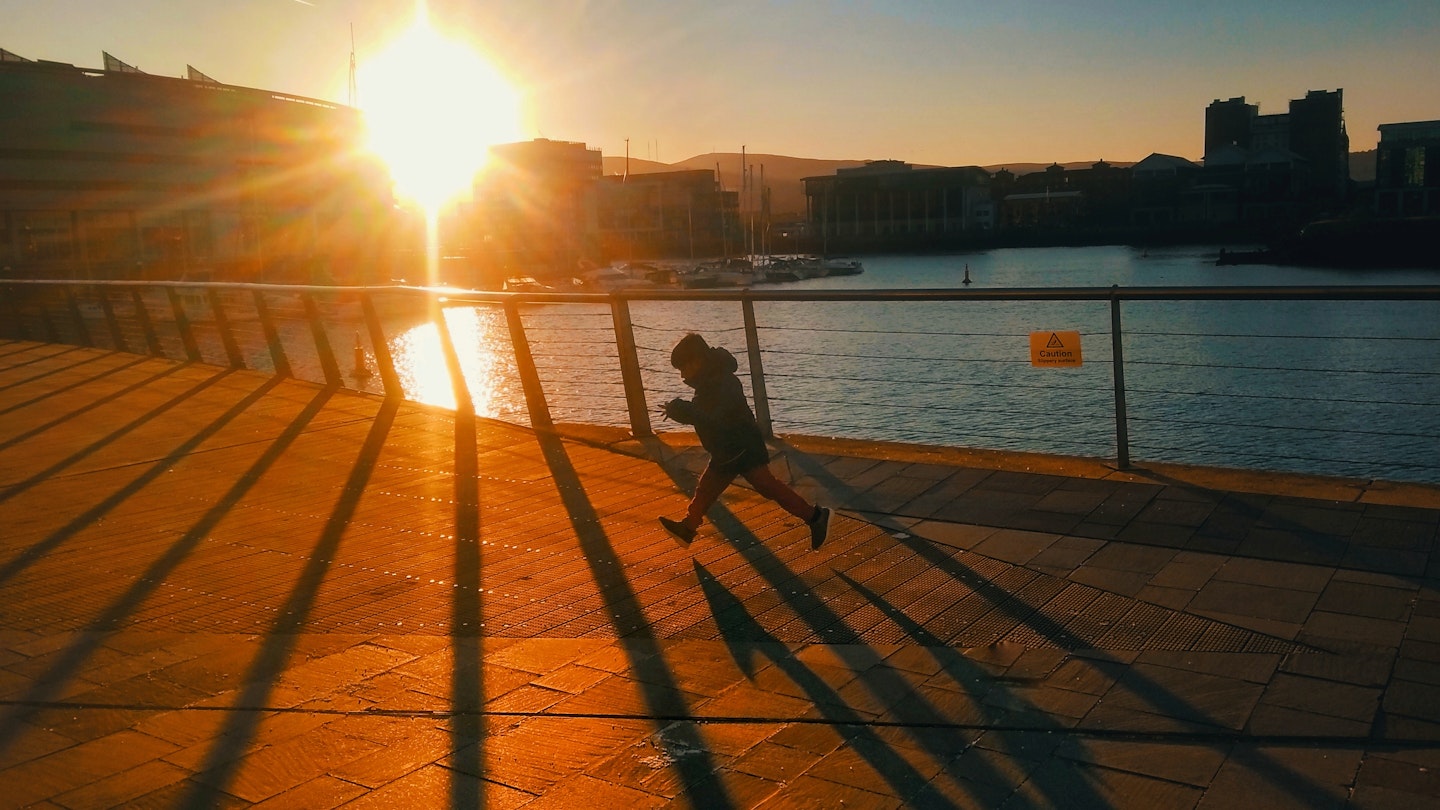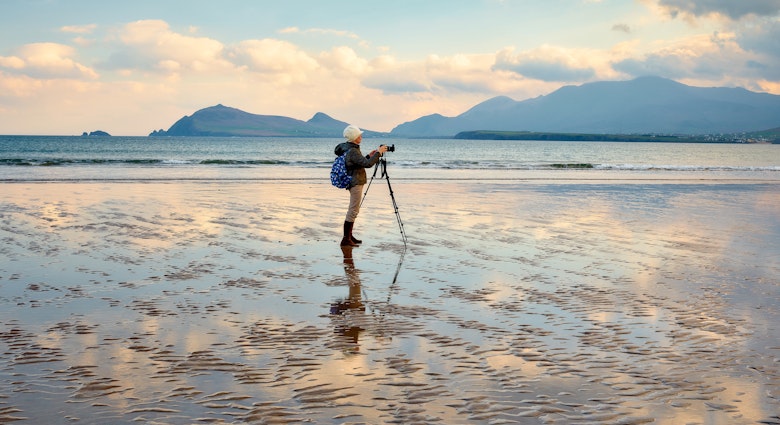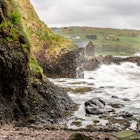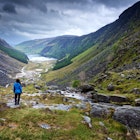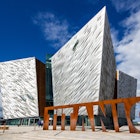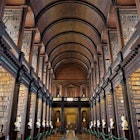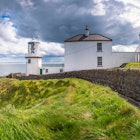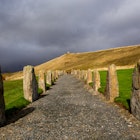You may not go to Belfast for the weather, but there are plenty of other reasons to book a sojourn to Northern Ireland’s capital. This small, idiosyncratic city has long punched above its diminutive weight in terms of cultural impact.
This is the hometown of Ulster Frys and Belfast baps; of CS Lewis, George Best, and Van Morrison; of the RMS Titanic and the Harland and Wolff shipyard; and of deeply politicized murals enlivening its red-brick gable walls.
Though Belfast bore witness to one of the most violent civil unrests in 20th-century Europe – known, in an incredibly downplayed Northern Irish way, as The Troubles – the scars have begun to heal, giving rise to a rejuvenated city that reflects on, rather than shies away from, its history.
Belfast today has a thriving performing arts scene and a nightlife culture that fuses haute cuisine with cozy pubs and Irish folk music. Carefully curated museums and tours provide nourishment for history buffs, whilst walking enthusiasts can find nature on the city’s doorstep. And though locals might bemoan the rising price of a pint, Belfast remains an affordable travel destination for most budgets. These are the best things to do.
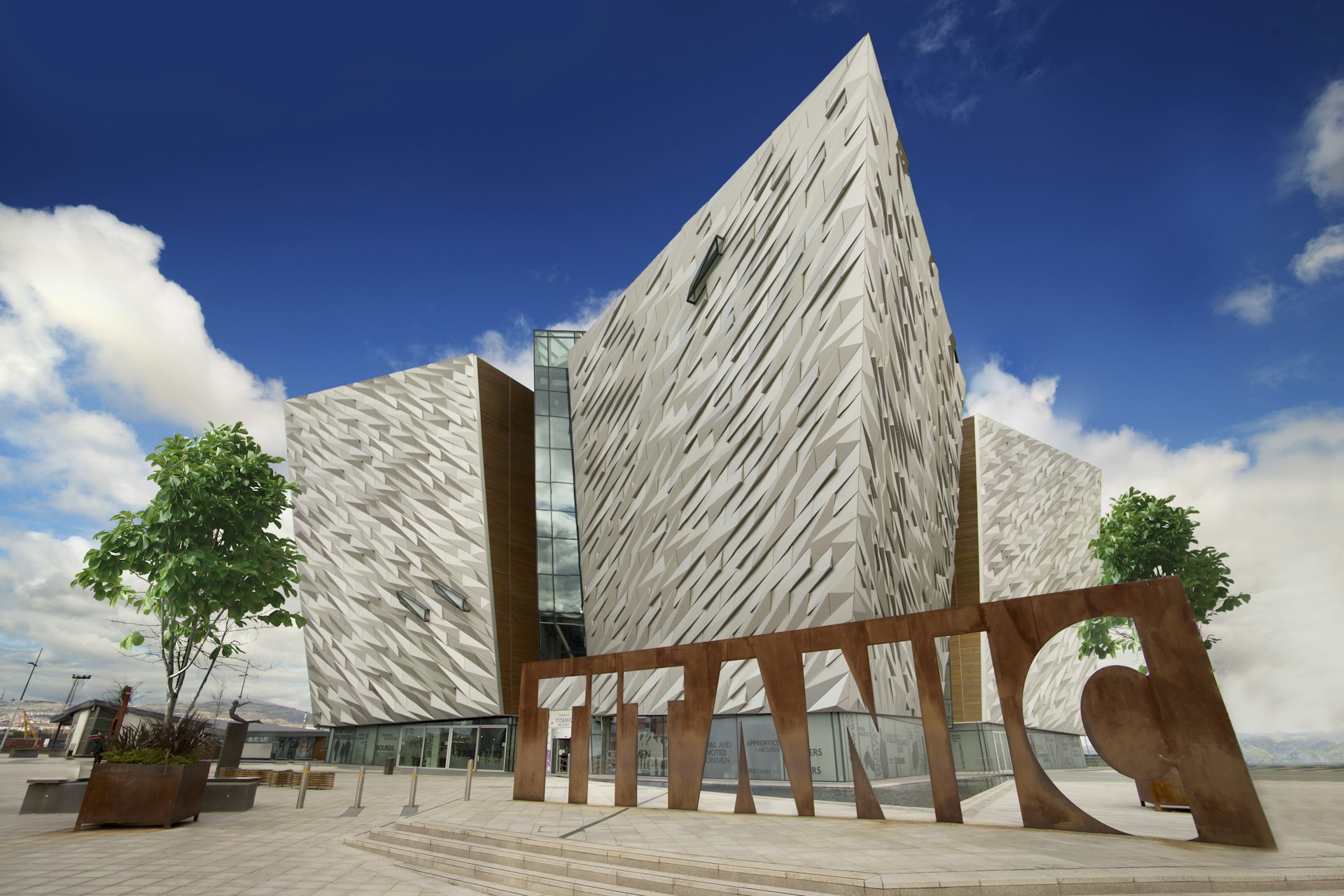
Dive into Belfast’s history at the Titanic Belfast museum
The Titanic Belfast museum, rising in star-like fashion from the grounds of Harland and Wolff shipyard, is much more than a mere maritime showcase. Told through interactive exhibitions, it’s a comprehensive exploration of Belfast’s storied history, from an 18th-century trading town on the River Lagan – Belfast’s original name, Beal Feirste, meant ‘Crossing of the River’ – to the industrial explosion that gave rise to world-leading linen, shipbuilding, rope-making, and tobacco-manufacturing industries. The journey culminates with an extensive deep dive into the RMS Titanic, whose ill-fated Atlantic voyage in 1912 eventually crippled the city’s number one industry.
As the central hub of Belfast's burgeoning Titanic Quarter, the museum nestles under the watchful gaze of its twin industrial icons: a pair of large yellow cranes named Samson and Goliath. You’ll want to set aside a few hours to meander through the five-story museum followed by a walk along the harbor. Finish up in nearby public house Hickson’s Point for a pint of Guinness – it’s unmissable thanks to the Docker’s Rest mural, portraying stout-swilling shipyard workers, on its exterior wall.
Watch a show at the theater
Belfast’s murky past has ensured that art and tragedy (and indeed comedy) deeply intersect, and perhaps nowhere is this more apparent than at the Lyric Theatre. First opened in 1968 – the same year the conflict began – Northern Ireland’s premier playhouse has cultivated a raft of world-renowned talent over the subsequent half-century, from Oscar-nominated actors Liam Neeson and Ciarán Hinds to award-winning playwrights Martin Lynch and Marie Jones. Be it conflict-era dramedies in the main auditorium or developmental pieces in the Naughton Studio, a night at the Lyric is a wonderful introduction to modern Belfast’s artistic prowess.
Serious theater heads should book a show in the Grand Opera House in Belfast city center, the go-to venue for large-scale productions, including West End and Broadway shows as well as Belfast-vernacular pantomime and Disney musicals. For independent productions and one-off performances, the Modern Arts Center, aka the MAC, and the Waterfront Hall are not-to-be-missed venues.
Go for a hike up Cave Hill
When the weather’s on your side (invariably difficult to predict, irrespective of the season) take a hike up Cave Hill which rises to a humble height of 368m (1207ft) above the low-lying city. The most famous of Belfast’s surrounding cliffs, it also goes by the colloquial epithet ‘Napoleon’s Nose’, due to its sharp profile which resembles that of the former French dictator. (Some also credit this profile as the inspiration for Jonathan Swift’s sleeping giant in Gulliver’s Travels.)
A 4.5-mile round-trip, starting and finishing at Belfast Castle, is the optimal walking course. En route, you’ll pass by the Devil’s Punchbowl (a large hollow set below the eponymous caves), the site where McArt’s Fort once stood, and views of Belfast Lough to the east and the Mourne Mountains in County Down to the south. On a clear day, the Isle of Man and the western tips of Scotland are also visible. The walk rarely gets too congested, but New Year’s Day and Boxing Day are favored brisk mornings for sweating out the festive cheer on Cave Hill. Solid footwear is recommended.
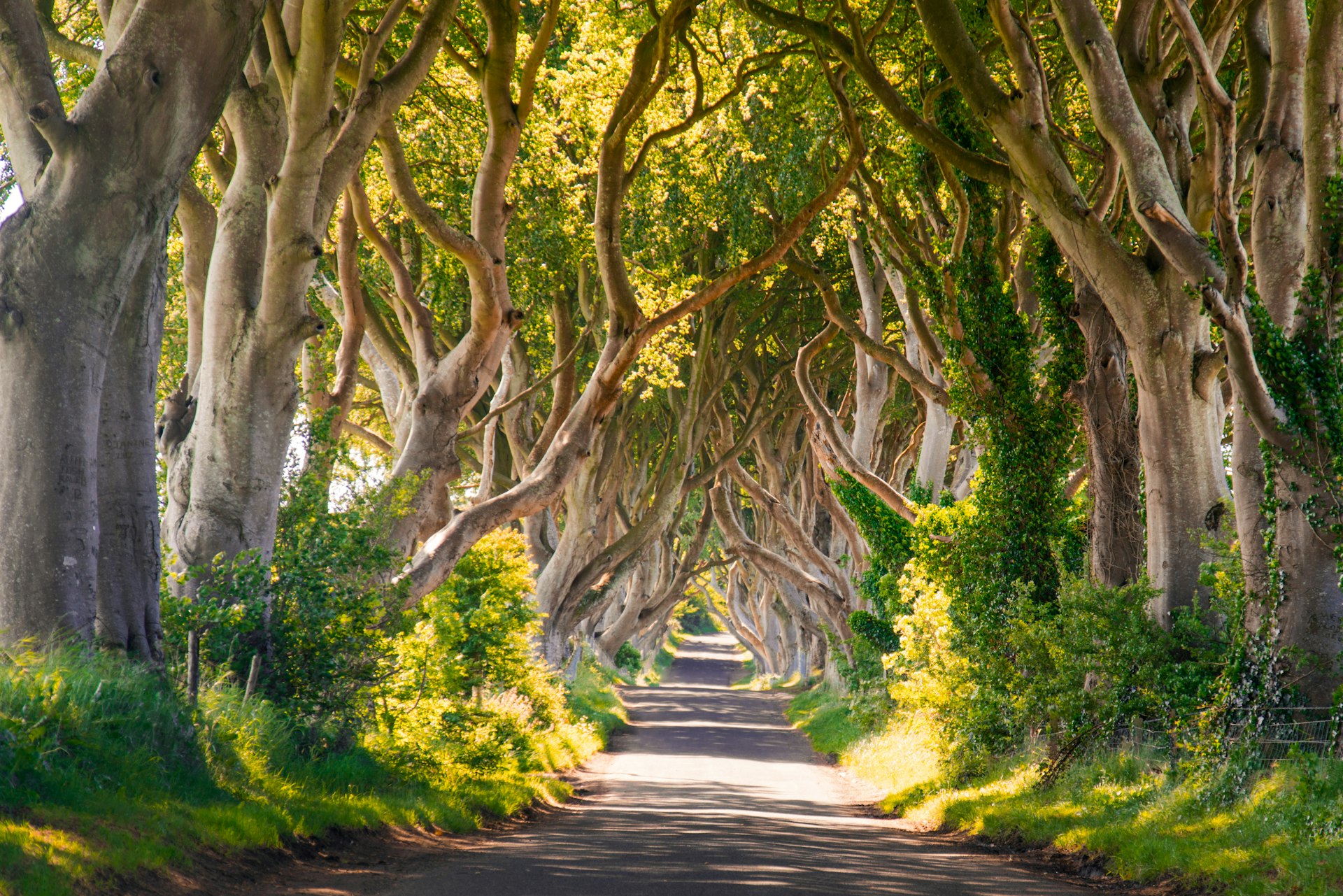
Visit Westeros in Belfast
Film and TV have become major pillars of the Northern Irish economy, and the primary catalyst for this was HBO’s Game of Thrones, with on-site filming locations littered across the country and major scenes shot on studio sets in Belfast. As a result, visitors to the capital are treated to a flavor of Westeros in a place where much of it became a reality.
Start with the Glass of Thrones walking tour, which connects six stained-glass artworks depicting epic scenes from the series. From John Snow wielding Longclaw near the waterfront AC Hotel to a depiction of the Lannisters’ bloodthirsty reign near decommissioned naval cruiser HMS Caroline, the 1.5-mile jaunt is a great way to stretch the legs early in the day.
Next, head to the cobble-laned Cathedral Quarter to see Belfast’s inclusion in the Journey of Doors. This project stemmed from Storm Gertrude which felled a couple of trees along the Dark Hedges – better known to GOT fans as the King’s Road – in 2016. Wood from the two toppled beech trees was turned into 10 doors, depicting Game of Thrones iconography. They were subsequently beset in the walls of public establishments around Northern Ireland. Grab a table at The Dark Horse coffee house and bar and look out for a door bearing the Lion of Lannister rising above Baelor’s Sept.
You could also set aside a morning for visiting the Linen Mill Studios in Banbridge, 25 miles outside of Belfast, where a Game of Thrones Studio Tour opened for business in early 2022. Showcasing sets, props, weapons, costumes, and visual effects from the show, it’s required-visiting for any serious fan of George R.R. Martin’s fictional world.
Bar hop in the Cathedral Quarter
In the Cathedral Quarter you’ll find some of Belfast's most iconic bars centered around a narrow walking street in the heart of the city. Grab a pint at the Duke of York, a cozy pub whose cramped confines are filled with hand-carved mirrors, chattering imbibers, and vintage ephemera from the nine counties of Ulster.
On long summer evenings, retreat to the beer gardens at The Thirsty Goat or The Dirty Onion (patio heaters and awnings included). The Harp Bar is roomy and chic with excellent live music throughout the week – and has Irish Harp lager on tap. Whilst Muriel’s is a suave hideout for craft spirits and artisanal cocktails.
Alternatively, more frivolous travelers may opt for the arched dining hall at the five-star Merchant Hotel, a classy spot for afternoon tea, or a couple of stiff whiskies and minor sevenths at the hotel’s in-house Berts Jazz Bar.
While you’re in the Cathedral Quarter, take a stroll past the Umbrella Passage mural, portraying famous local faces crowded around a table under a canopy of umbrellas, and St Anne’s Cathedral, the grand Church of Ireland edifice from which the area gets its name.

Take a black taxi tour of Belfast’s political murals
As the late Northern Irish poet, Seamus Heany, once opined, “The end of art is peace”; a sentiment the Belfast black taxi tour echoes. In the backseat of a black cab – many of which appeared during the early days of The Troubles due to a lack of public transport in north and west Belfast – you’ll chart a course through some of the city’s most divided neighborhoods and past a rich tableau of murals borne out of the late-20th-century tensions.
Many of those who contributed to the fractured sociopolitical landscape – the martyred republican hunger striker, Bobby Sands; 17th-century icon of Ulster unionism, King William of Orange; paramilitaries on both sides of the Unionist-Nationalist divide – are portrayed in the mural iconography of the tour. Each offers a visual aid to understanding the complex history of Troubles-era Belfast. You’ll also swing by the peace walls – around which the conflict was once at its most violent – which still divide two ostensibly opposed sides of the community.

Indulge in a fish supper
Fish suppers are the quintessential, hearty fast-food repast of nearly every Northern Irish childhood. Taking advantage of its seaside location, Belfast is awash in “chippies” selling this enduring guilty pleasure. There is no fluff when it comes to fish supper composition: It features battered and deep-fried white fish (usually cod, occasionally haddock) on top of a bed of chips. Tartare sauce, mushy peas, and salt and vinegar are common additions.
On the recently gentrified Ormeau Road, Kings Traditional Fish and Chips has stuck to its roots and still serves up some of the finest fish suppers in south Belfast. Spence's Fish & Chip – formerly Eddie Spence’s – in east Belfast is little known outside local quarters, but its longevity (in business since the 1920s) is a testament to its quality. Once a cult favorite, John Long’s Fish & Chips, the oldest shop of its kind in the city, is now the prime spot for fish suppers in the center of town. Your options are aplenty, and seldom does quality not match the quantity.
Break your fast on an Ulster Fry
No punches are pulled with breakfast food in Belfast either; a fact personified by the Ulster Fry. Taking its name from the Province of Ulster, which encompasses Northern Ireland and three counties in the Republic, Ulster Frys are a combination of eggs, bacon, sausages, beans, tomatoes, mushrooms, potato bread, soda bread, and white and black pudding. Most cafes and pubs will serve some version of this (often throughout the day).
Maggie May’s near the venerable halls of Queens University has become popular for its humongous Ulster fry, while Cyprus Avenue in east Belfast, named after the Van Morrison song of the same name, matches its boutique vibe with fancy takes on the nation’s favorite breakfast. Harlem Cafe in the center of town also comes highly recommended.
Check out the street art at CS Lewis Square
Over the last decade, east Belfast has been subject to a variety of district rejuvenation projects, most notably, CS Lewis Square; it’s a homage to the eponymous creator of the fictional world Narnia and a portal to the other side of his most famous wardrobe.
Head down to see the dramatis personae of Lewis's bestselling series recreated in statue form: A distinctly Westerosi Aslan, looking as though he were crafted from melted swords, alongside sculptures of the White Witch, Mr. Tumnus, the Beavers, and a replica of the Stone Table. You’ll also find the Luminaries and Legends mural splashed across a gable wall here, celebrating famous “easties”, including Van Morrison, Thin Lizzy guitarist Gary Moore, and CS Lewis himself.
After admiring the art, take a seat at nearby cafe JACK, as CS Lewis was known to his closest acquaintances, for a cup of craft coffee and toasties made with locally-sourced ingredients. Alternatively, nip into Freight, a quirky cafe built inside a freight container pinned to the corner of the square, serving brunch inspired by cuisines from around the globe.

Soak up the local music scene
Belfast’s Celtic roots have ensured the live music scene is baked into the foundations of its nightlife culture. And in 2021, it became a UNESCO City of Music, recognizing its “rich musical heritage” and “the importance of music to its future”. Be it session nights at the John Hewitt (named after the famous Belfast poet) or journeyman musicians performing at the Black Box, travelers on the hunt for live music will never be far from twanging guitar chords and rippling fiddles.
Fibber Magees and The Points are two great spots for trad and folk music seven nights a week. Voodoo offers a good alternative option, which following its hipster makeover, has become a favored spot for club and LGBT nights, as well as indie rock and metal events. For marquee names, grab a ticket for the summer Belsonic festival in the leafy environs of Ormeau Park; former acts include Liam Gallagher, Stereophonics, Ellie Goulding, DJ Tiesto, Stormzy, and many more.
Watch live sports – rugby, football, ice hockey
Northern Ireland has a rich sporting heritage and watching one of the local professional teams in action is a great way to kick off a night on the town. The Kingspan Stadium, affectionately known by its previous name “Ravenhill”, is the home of Ulster Rugby.
After undergoing renovation from 2012 to 2014, the stadium now accommodates 18,000 spectators, typically welcoming a full house for Friday evening and Saturday afternoon games. Guinness is served on tap in the beer tents, while The Errigle and The Pavillion (sometimes called “The Big House”) bars on nearby Ormeau Road are popular haunts for pre-match tipples and post-match celebratory toasts.
Windsor Park, Northern Ireland’s home football stadium in south Belfast, also underwent a recent renovation (completed in 2015). The “Kop end” of the stadium – officially, the West Stand – has one of the best atmospheres in world football, evidenced by the Medal of the City of Paris awarded to Northern Irish fans during the 2016 UEFA European Football Championships. Tickets at Windsor Park are hot commodities during Euro and World Cup qualifying campaigns.
Ice hockey doesn't garner the same levels of fandom in Belfast as its field sports counterparts, but catching a Belfast Giants game at the SSE Arena’s ice rink is a surprisingly fun night out. The sport is exhilarating and abrasive, while the lively atmosphere caters well to families.
Dine out on Michelin-star fare
Belfast’s burgeoning culinary scene was given another boost at the beginning of 2022 when all three of its Michelin-star-rated restaurants retained their lofty status. The most recent addition to the culinary pantheon is the Muddlers Club, hidden down a cobbled entryway in the Cathedral Quarter, which specializes in creative tasting menus using homegrown produce. The kitchen is partially open to the dining floor, creating a sense of theater within its urbane confines, while the mixologists pay as much attention to detail with their cocktails as the chefs exercise towards the food.
Deanes Eipic is perhaps a little more bougie, but is no less deserving of its Michelin star, thanks to incredibly delicate tasting menus inspired by the seasons. The in-house sommelier learned his craft in the Loire Valley and curates inspired wine pairings to complete the dining experience.
Started by a chef duo who underwent culinary tutelage in Paris, OX Belfast was awarded a Michelin star in 2016, which it has retained ever since. Elegant seasonal tasting menus are once again the order of the day, alongside wine pairings, and beer, cider, and spirits from around Ireland.
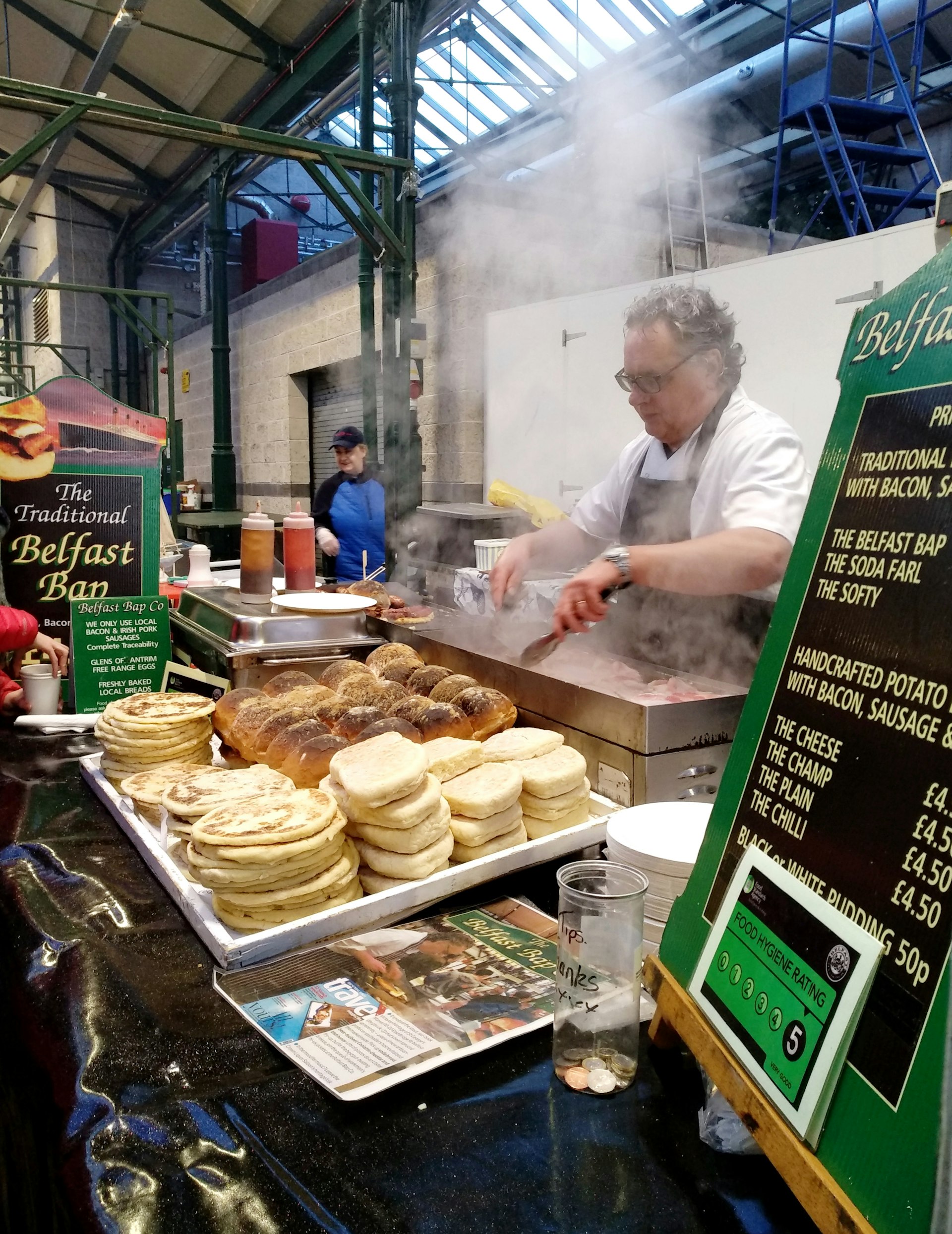
Get thrifty at St George’s Market
St George’s Market in the city center, open from morning to early afternoon Friday through Sunday, is Belfast’s premier permanent market space, crammed with stalls selling vintage clothing, Celtic jewelry, boutique artworks, handmade crafts, and gastronomic pleasures. Though the market, situated in a Victorian-era building, is a mainstay of the Belfast townscape, the goods on offer are cyclical.
The Friday variety market, whose origins date back to 1604, focuses on local farming produce alongside a smattering of books, clothes, and antiques. Saturday is more artisanal, with arts and crafts taking center stage, joined by continental cuisine and coffee bean stalls. The Sunday market marries the best of the Friday and Saturday editions and frequently features local artisans peddling their most recent handiwork. If the Belfast Bap Co is in attendance, don’t miss out on its signature offering: A Belfast bap (crusty white bread roll) filled with the ingredients of an Ulster Fry.
Dark tourism at Crumlin Road Gaol
Opened in 1846, the Victorian-era Crumlin Road Gaol is a brooding prison that closed its doors in 1996 after 150 years of operation. Self-guided tours with audio guides and holograms are the best way to explore its cavernous tunnel, shoebox cells, and macabre graveyard. From Eamon de Valera, who would go on to be Taoiseach (Prime Minister) of the Irish Republic, to the Sinn Fein politician Martin McGuiness and loyalist militant Michael Stone (who eventually attempted to bomb the Stormont parliament buildings) many high-profile figures were confined with the gaol’s walls.
Crumlin Road Gaol is also now used as an event space, including cabaret nights, escape room-style games, and destination weddings. A full list of “Live at the Crum” events is available on their website.
Ye olde history at the Ulster Folk Museum
If you want to travel further back in time, the Ulster Folk Museum is a recreated township in the rolling hills of Ballycultra on the Belfast outskirts. Complete with thatched-roof cottages, live traditional crafting sessions (including smithing and tweed-weaving), shops selling period-appropriate food and trinkets, and permanent exhibition spaces, it explores the humble residential life of early 20th-century Ulster.
A Languages of Ulster project has also been unveiled, paying tribute to Northern Ireland’s linguistic roots. Guided through the museum via a booklet or app you’ll follow the Cúl-Trá-il trail and learn about the traditions of Hiberno-English, Irish, and Ulster Scots and their respective fights for survival.
You might also like:
Belfast: A local's guide on where to go
Where to find Game of Thrones tours and attractions after the finale
First time Northern Ireland: a small destination with Titanic appeal

